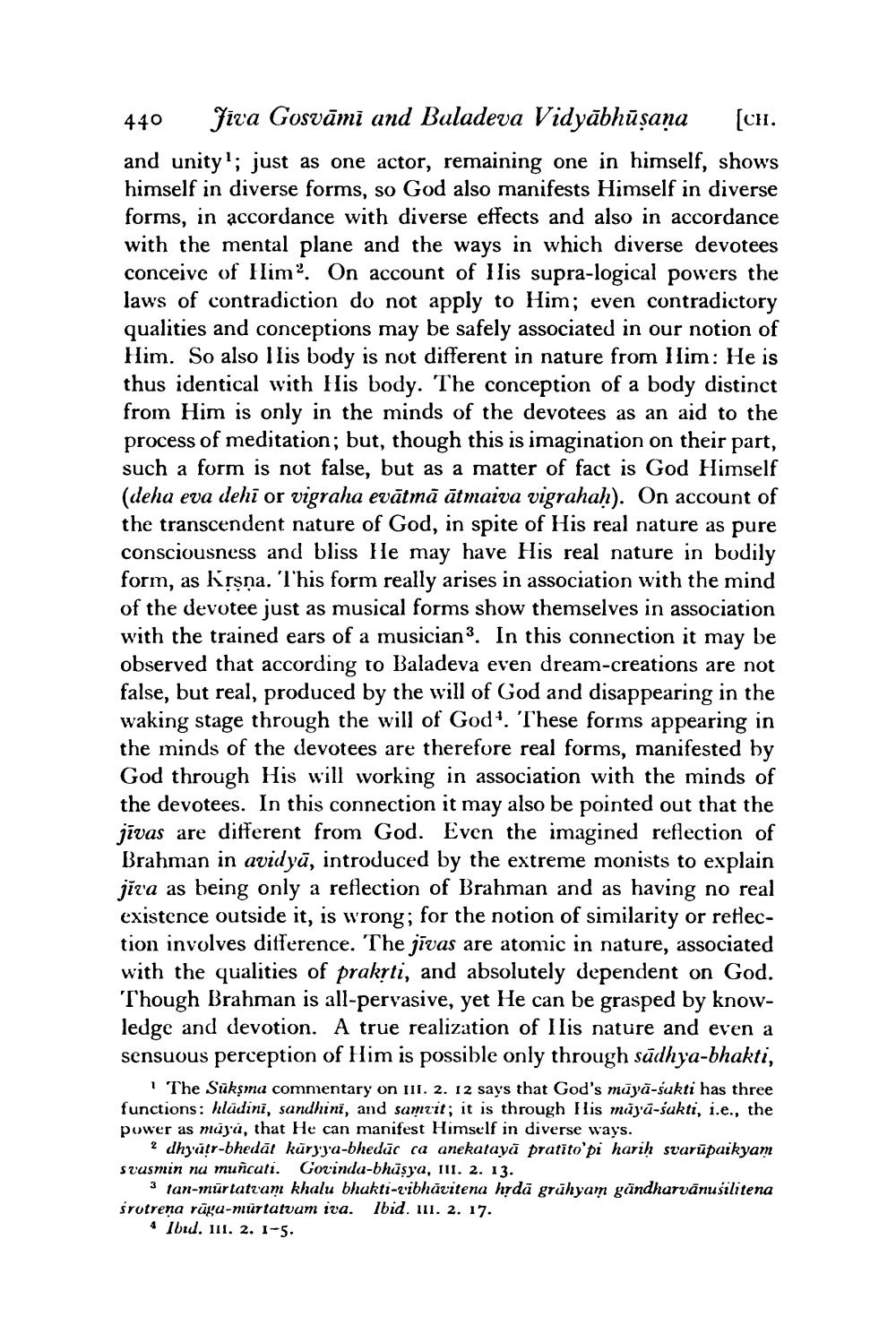________________
440 Jiva Gosvāmi and Baladeva Vidyābhūșana [CH. and unity'; just as one actor, remaining one in himself, shows himself in diverse forms, so God also manifests Himself in diverse forms, in accordance with diverse effects and also in accordance with the mental plane and the ways in which diverse devotees conceive of Him? On account of His supra-logical powers the laws of contradiction do not apply to Him; even contradictory qualities and conceptions may be safely associated in our notion of Him. So also llis body is not different in nature from Ilim: He is thus identical with His body. The conception of a body distinct from Him is only in the minds of the devotees as an aid to the process of meditation; but, though this is imagination on their part, such a form is not false, but as a matter of fact is God Himself (deha eva dehi or vigraha evātmā ātmaiva vigrahaḥ). On account of the transcendent nature of God, in spite of His real nature as pure consciousness and bliss He may have His real nature in bodily form, as Krsna. This form really arises in association with the mind of the devotee just as musical forms show themselves in association with the trained ears of a musiciany. In this connection it may be observed that according to Baladeva even dream-creations are not false, but real, produced by the will of God and disappearing in the waking stage through the will of God'. These forms appearing in the minds of the devotees are therefore real forms, manifested by God through His will working in association with the minds of the devotees. In this connection it may also be pointed out that the jīvas are different from God. Even the imagined reflection of Brahman in avidyā, introduced by the extreme monists to explain jira as being only a reflection of Brahman and as having no real existence outside it, is wrong; for the notion of similarity or reflection involves difference. The jīvas are atomic in nature, associated with the qualities of prakrti, and absolutely dependent on God. Though Brahman is all-pervasive, yet He can be grasped by knowledge and devotion. A true realization of Ilis nature and even a sensuous perception of Him is possible only through sūdhya-bhakti,
1 The Sukşma commentary on 111. 2. 12 says that God's māyā-sakti has three functions: hlüdini, sandhini, and samrit; it is through His muyā-sukti, i.e., the power as muyu, that He can manifest Himself in diverse ways.
? dhyālr-bhedāt kūryya-bhedūc ca anekatayā pratito'pi harih svarūpaikyam svusmin na muncuti. Govinda-bhāsya, III. 2. 13.
3 tan-murtatram khalu bhakti-vibhāvitena hrdā grūhyam gândharvānusilitena srotrena rūgu-murtatvum iva. Ibid. 11. 2. 17.
4 Ibid. 111. 2. 1-5.




